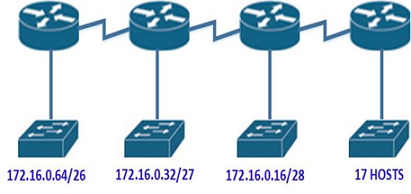Subnetting is definitely one of the things you need to know inside and out to pass your CCENT 100-101 or CCNA 200-120 exam. You will see pretty straight forward subnetting questions and you will also see scenario based questions that you will need to employ your subnetting skills to determine where the problem resides.
A classic example of such as subnetting question on the CCENT or CCNA exam is where you will have hosts on different subnets and the exam question will state that Host A and Host B cannot communicate and since the topology shown will be using variable length subnet masks you will need to be able to identify the different subnet ranges and you will find that one of the Hosts is configured with a router as a gateway that is not within the subnet range even though they are physically connected.
So that is just one of the many examples of why you need to know subnetting inside and out. Additionally, the better you know subnetting, the faster you can get through the questions as you do not want to be struggling trying to figure out subnet ranges as the exam only gives you a limited amount of time and most students only have a few minutes left at the end of their exam.
A quick tip is as the proxy shows you to your testing sheet, they will usually hand you two laminated dry erase sheets with a dry erase marker to take notes and do your subnetting in place of scrap pieces of paper. The proxy will then start the exam session for you and you have about 15 minutes to answer various marketing questions that do not impact your exam. During that time write down your subnetting charts on the laminated sheets. This way you can quickly refer back to them during the test. It might only save a few minutes, but every minute counts on this exam!
So below we have another classic subnetting question you may see on the exam. Take a look at the network topology below. One of our CCNA certified network administrators has added a new subnet with 17 hosts to the network. Which subnet address/mask should this network use to provide enough usable addresses while wasting the fewest addresses?

CCENT/CCNA Subnetting
A. 172.16.0.0/24
B. 172.16.0.64/27
C. 172.16.0.128/27
D. 172.16.0.24/29
E. 172.16.0.192/26
Variable Length Subnet Mask (VLSM) Subnetting
Answer A would provide you 254 hosts per subnet so that is too many. The number of hosts needed is 17; therefore the subnet mask should be /27 which allows for up to 32 hosts i.e 255.255.255.224. In this scenario there are only 2 answers that could fit, which are B and C.
B is wrong since the network 192.168.0.64/27 is in another subnet on the first router. Therefore it cannot be used and accordingly the correct answer is C.
Answer D is incorrect as /29 which is 255.255.255.248 will only provide 6 hosts per subnet and does not meet the criteria of a minimum of 17 hosts per subnet. Answer E is incorrect as a /26 which provides a subnet mask of 255.255.255.192 will provide 62 hosts per subnet which like answer A is wasteful as it provides too many.
What is really cool is when you have your own CCNA lab, you will be able to actually configure the routers so they match the topology and cycle through the different options to see what really works. This way it is not simply theory, it becomes real to you when you see these concepts in action!
So, check out our Lab Suggestions and our CCENT & CCNA Lab Certification Kits
